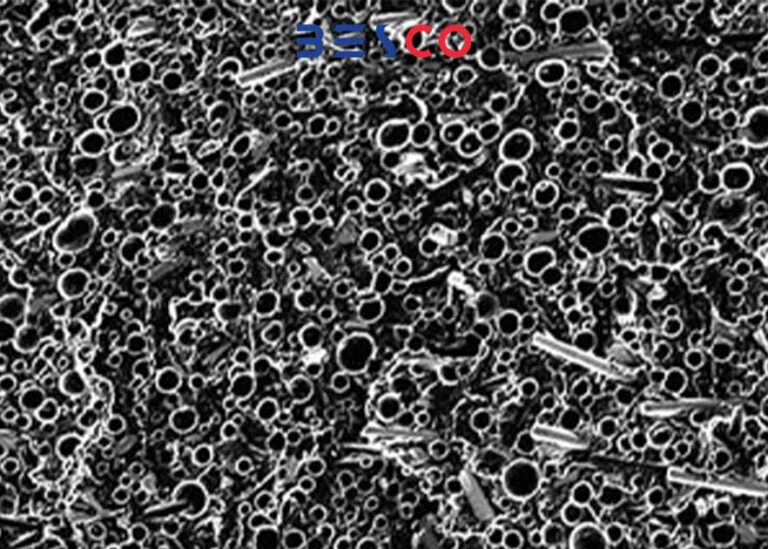What is MuCell Microcellular Foam Injection?
MuCell is a new plastic injection molding technology to make it possible to produce lightweight, cost-effective plastic parts.
This technology involves injecting a supercritical fluid (such as nitrogen or carbon dioxide) into molten plastic during the injection process. This creates a microcellular foam structure within the plastic part, which advantages in many ways.
MuCell Technology Equipment
For the injection of MuCell technology into injection molding machines, the machinery must be integrated specifically in order to facilitate the ability for gas injection addition into the production process. The following are some of the fundamental equipment required in order to institute this technology:

1.MuCell Fitted Injection Molding Machine: The machinery must be synchronized with MuCell technology through the integration of gas injection systems in the plastic melt and also precise control over temperature and pressure.
2.\tGas Injection Unit: It is the critical unit of MuCell technology. Nitrogen or carbon dioxide gas under high pressure is injected in the plastic melt, which creates a microcellular structure in the final product.
\to\tNitrogen Generator: Needed to create high-purity nitrogen.
\to\tGas Storage Tank: To offer a steady supply of nitrogen or CO2.
3.\\tGas Control System: It regulates the quantity and pressure of the gas injected to facilitate equal and accurate gas injection throughout the process.
4.\\tMicrocellular Process Control System: Software packages that monitor and regulate microcellular processes such that operators can control pressure, temperature, quantity of gas, and other basic parameters during the injection process.
- Chiller Unit: Used to obtain the ideal temperature for molds and material for use in the manufacturing process. An accurate chiller must be used for MuCell, as cooling time and temperature are critical.
- MuCell Molds: Must be able to withstand higher pressures and must be compatible with microcellular processing conditions to ensure proper gas distribution and optimal microcellular structure.
- Pressure and Temperature Sensors: Sensors monitor injection conditions to ensure the best performance, allowing operators to optimize and optimize the process.
- Vacuum System: On some applications, a vacuum system is needed to remove unwanted gas bubbles and increase the quality of the final component.
- Safety and Maintenance Systems: MuCell technology demands safety equipment for handling high pressure and temperature. Periodic maintenance is necessary to avoid malfunctions and ensure maximum performance.
- Simulation and Monitoring Software: Advanced software packages assist in simulating the process and analyzing gas and bubble distribution in the plastic, helping optimize part design and the process.
These components allow the injection molding machine to correctly perform the microcellular process, producing lighter, stronger, and higher-quality parts.
MuCell Technology Principles:
- Supercritical Fluid Injection (SCF): A supercritical fluid is injected into molten plastic, creating a single-phase solution.
- Microcellular Structure Development: Pressure drop on injection into the mold creates cell nuclei that grow to fill the mold.
MuCell Technology Advantages:
1.Weight Savings: Foam structure reduces part density, beneficial for automotive, aerospace, and consumer electronics applications where weight reduction is critical.
2.Cost Savings: Reduced material usage and reduced cycle time translate to operational cost savings.
- Improved Part Quality: The technology provides improved surface finish and dimensional integrity of plastic parts.
- Environmental Benefit: The technology is applied to conserve energy and reduce environmental footprints.
MuCell Technology Applications:
- Automotive Industry: Automotive light weight parts for improved fuel economy and reduced green house gas emissions.
- Aerospace Industry: Production of light weight and resilient parts for aircraft and space crafts.
- Consumer Electronics: Manufacturing of light weight and high quality parts for consumer gadgets like mobiles and laptops.
MuCell System Components in FCS Injection Molding Machines
- Shutoff Nozzle: Shutoff valve in the nozzle maintains constant set pressure throughout the process.
- Screw: Unique screw design ensures polymer and gas are well mixed in the mixing section.
- Pressure Sensor: Controls pressure in the injection unit.
- Gas Injector & Controller: Generates liquid nitrogen at controlled pressure and injects it into the plastic melt.
FCS launched this technology in 2018, effectively implementing it in machines such as LM (two-platen), HT (servo-hydraulic), FA (advanced servo-hydraulic), CT-e (electric), and FB (multi-color).
